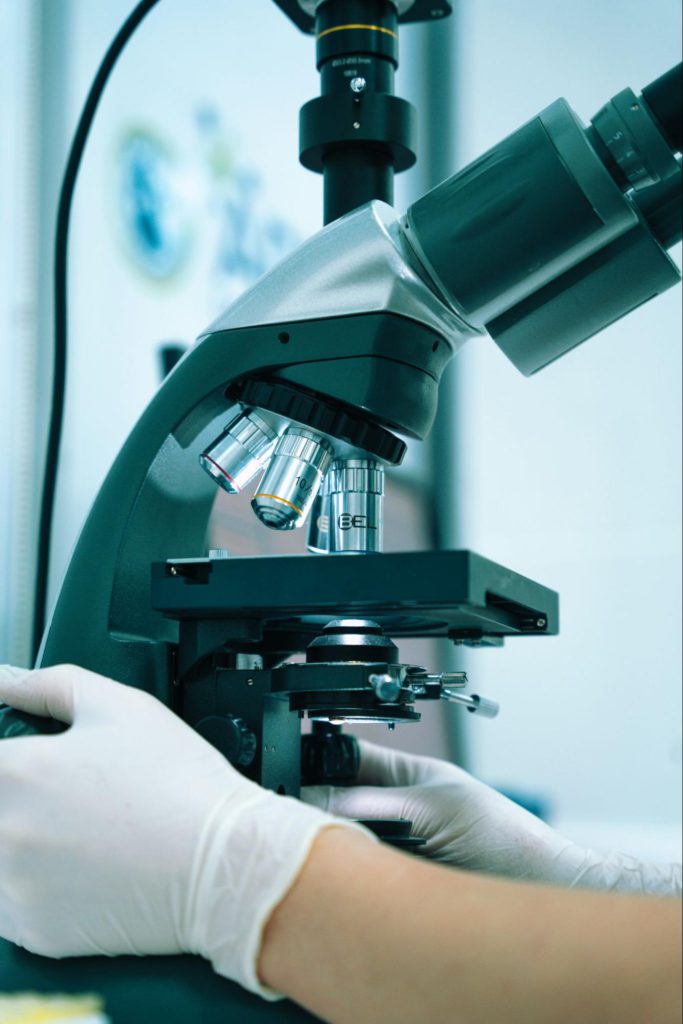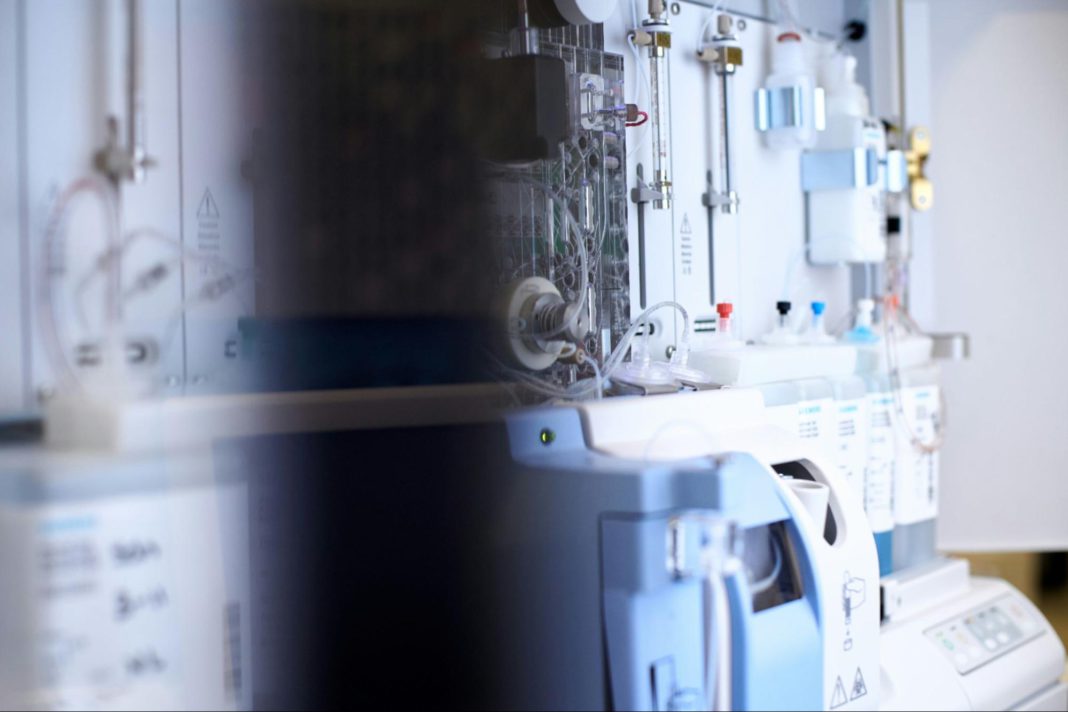Published in cooperation between Biotech Peptides and the Pacific Sun
Livagen, a peptide derived from thymic tissues, has garnered attention in scientific research due to its intriguing properties. Investigations suggest that the peptide may hold promise in various domains, including cellular aging, regenerative cell science, immunomodulation and molecular signaling.
The peptide’s molecular interactions suggest a complex interplay with various physiological pathways, positioning it as a candidate for further exploration in research. This article explores the speculative yet compelling possibilities of Livagen beyond its conventional implications, highlighting its molecular interactions and physiological support within the research model.
Molecular Characteristics and Mechanisms
Livagen is characterized by a specific peptide sequence theorized to contribute to its activity. Peptides like Livagen are believed to play a role in intracellular communication, where they may support signaling pathways that regulate protein synthesis, enzymatic activity and cellular maintenance. Research indicates that its small molecular size may enable it to traverse cellular membranes, potentially making it a suitable agent for scientific studies exploring intracellular dynamics.
The peptide’s hypothesized role in supporting cellular processes may stem from its origins in thymic tissues, which are associated with immune regulation. Researchers theorize that Livagen may interact with the transcriptional and translational machinery in cells, potentially supporting gene expression and protein turnover, critical factors in maintaining cellular homeostasis. Additionally, investigations purport that Livagen may support chromatin remodeling, potentially impacting DNA accessibility and gene activation.
Potential Implications in Cellular Aging Research
One of Livagen’s most compelling research areas is the study of cellular aging. A gradual decline in cellular repair mechanisms, protein stability and the integrity of genetic material accompanies cellular aging. Peptides like Livagen have been hypothesized to modulate these processes, potentially as a tool to investigate the molecular underpinnings of cellular aging.
For instance, the findings suggest that Livagen may support the activity of key enzymes involved in cellular repair and stress response pathways. Investigations purport that the peptide may interact with epigenetic regulators, such as histone-modifying enzymes, potentially supporting chromatin structure and gene expression patterns that change during cellular aging. Additionally, Livagen’s possible support of oxidative stress pathways is another area of interest, as oxidative damage accumulates in cells over time and contributes to cellular aging-related dysfunctions.
Regenerative Science and Tissue Research
Livagen’s properties are believed to extend into regenerative science, where investigations purport its relevance in tissue repair and cellular regeneration. Research indicates that the peptide may support stem cell differentiation, guiding cellular pathways toward supported tissue restoration. It has been hypothesized that Livagen might support wound healing processes by modulating inflammatory responses and extracellular matrix remodeling.
Additionally, research suggests that Livagen might interact with growth factor signaling, potentially contributing to studies on organ regeneration and biomaterial integration. These speculative insights position the peptide as a candidate for further exploration in regenerative approaches. Investigations suggest that Livagen may support angiogenesis, potentially facilitating vascular remodeling and tissue perfusion in regenerative contexts.
Immunity and Inflammation
The peptide’s engagement with immune pathways has sparked interest in its potential role in immunomodulation. Studies suggest that Livagen might support cytokine release and immune cell activity, contributing to investigations into inflammatory conditions. It has been theorized that the peptide may regulate immune responses, offering insights into its role in supporting states of chronic inflammation.
Moreover, research indicates that Livagen might interact with molecular mediators involved in oxidative stress and cellular defense mechanisms. These interactions may provide valuable insights into understanding immune resilience and inflammatory regulation within the organism. Investigations purport that Livagen may support macrophage polarization, potentially supporting immune cell function and tissue homeostasis.
Cellular Signaling and Metabolic Pathways
Beyond its conventional implications, Livagen’s involvement in cellular signaling has become a focal point in scientific inquiry. Investigations suggest that the peptide may interact with intracellular pathways regulating energy homeostasis and cellular adaptation. It has been hypothesized that Livagen may contribute to mitochondrial efficiency and metabolic flexibility, providing insights into its broader physiological support.
Additionally, research suggests that Livagen might interact with transcription factors and epigenetic regulators, potentially supporting gene expression patterns. These speculative considerations highlight the peptide’s relevance in molecular biology and cellular adaptation studies. Investigations suggest that Livagen may support protein kinase signaling, potentially enhancing cellular stress responses and metabolic regulation.
Exploratory Implications in Bioengineering and Pharmacology
Emerging hypotheses suggest that Livagen may have implications for bioengineering. The peptide’s stability and receptor interactions may provide insights into novel research formulations.
Some investigations have purported that Livagen may interact with synthetic scaffolds designed for tissue engineering, potentially supporting cellular adhesion and integration. These speculative insights position the peptide as a candidate for further exploration in bioengineering and pharmacological innovation.
Conclusion
Livagen’s expanding research horizons underscore its potential beyond traditional implications. The peptide’s properties have sparked scientific inquiry across a range of disciplines, including cellular aging, regenerative science, immunomodulation, molecular signaling and bioengineering.
While further investigations are necessary to substantiate these hypotheses, the speculative nature of current findings suggests that Livagen might hold promise in diverse research domains. As scientific exploration advances, the peptide’s multifaceted interactions within the organism may reveal novel insights, shaping future research directions. Visit https://biotechpeptides.com for more useful peptide data.

References
[i] Khavinson, V. K., Lezhava, T. A., Malinin, V. V., Ryadnova, I. Y., & Trofimova, S. V. (2002). Anti-aging peptide bioregulators induce reactivation of chromatin. Bulletin of Experimental Biology and Medicine, 133(1), 70–72. https://doi.org/10.1023/A:1019929728484
[ii] Lee, C., Zeng, J., Drew, B. G., Sallam, T., Martin-Montalvo, A., Wan, J., … & Cohen, P. (2015). The mitochondrial-derived peptide MOTS-c promotes metabolic homeostasis and reduces obesity and insulin resistance. Cell Metabolism, 21(3), 443–454. https://doi.org/10.1016/j.cmet.2015.02.009
[iii] Khavinson, V. K., Malinin, V. V., & Ryadnova, I. Y. (2003). Epigenetic variations in chromatin are caused by the combination of bioregulators with heavy metals during aging. International Journal of Peptide Research and Therapeutics, 9(2), 123–128. https://doi.org/10.1023/B:IJPR.0000007023.75931.8f
[iv] Goya, R. G., & Sosa, Y. E. (2003). Thymic peptides and aging: a reappraisal. Gerontology, 49(4), 234–241. https://doi.org/10.1159/000070823
[v] Khavinson, V. K., & Morozov, V. G. (2003). Peptide bioregulators in gerontology and geriatrics. Neuroendocrinology Letters, 24(5), 329–335. https://pubmed.ncbi.nlm.nih.gov/14523363/








